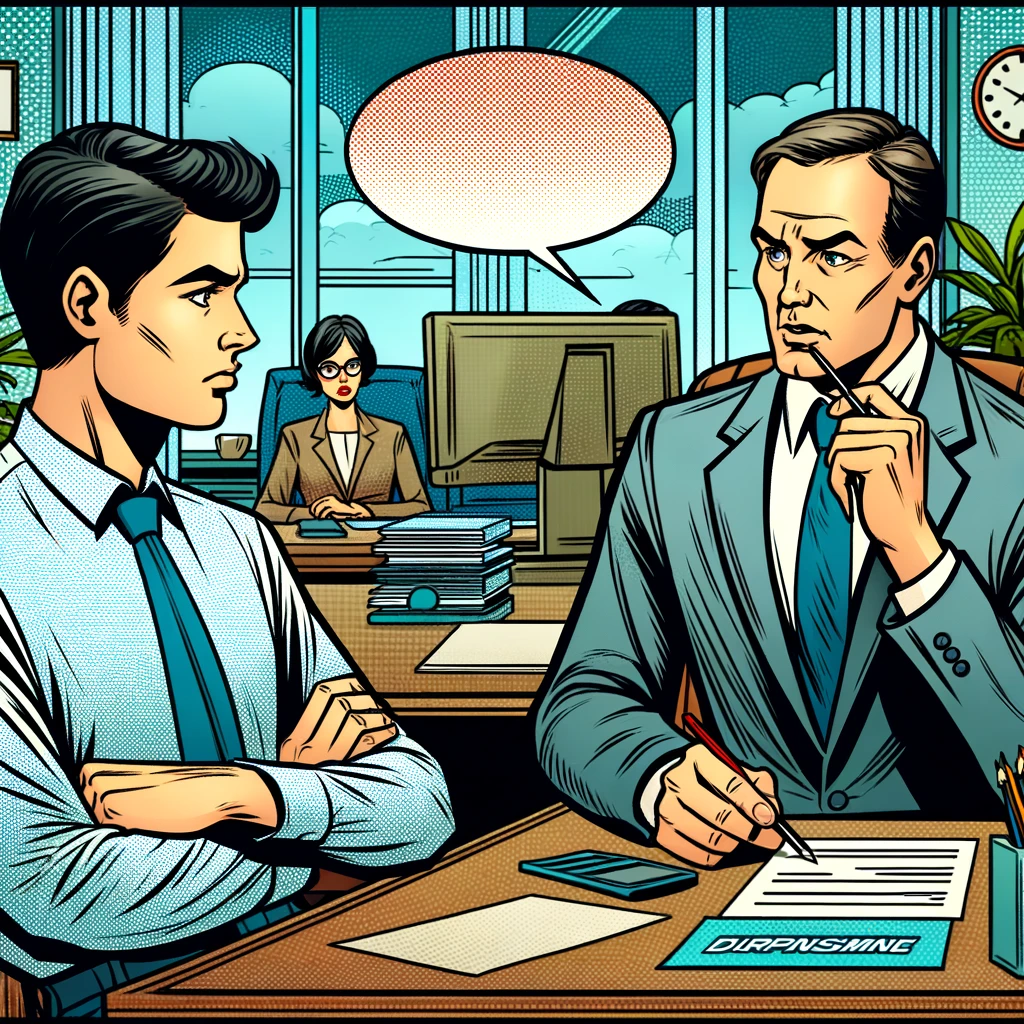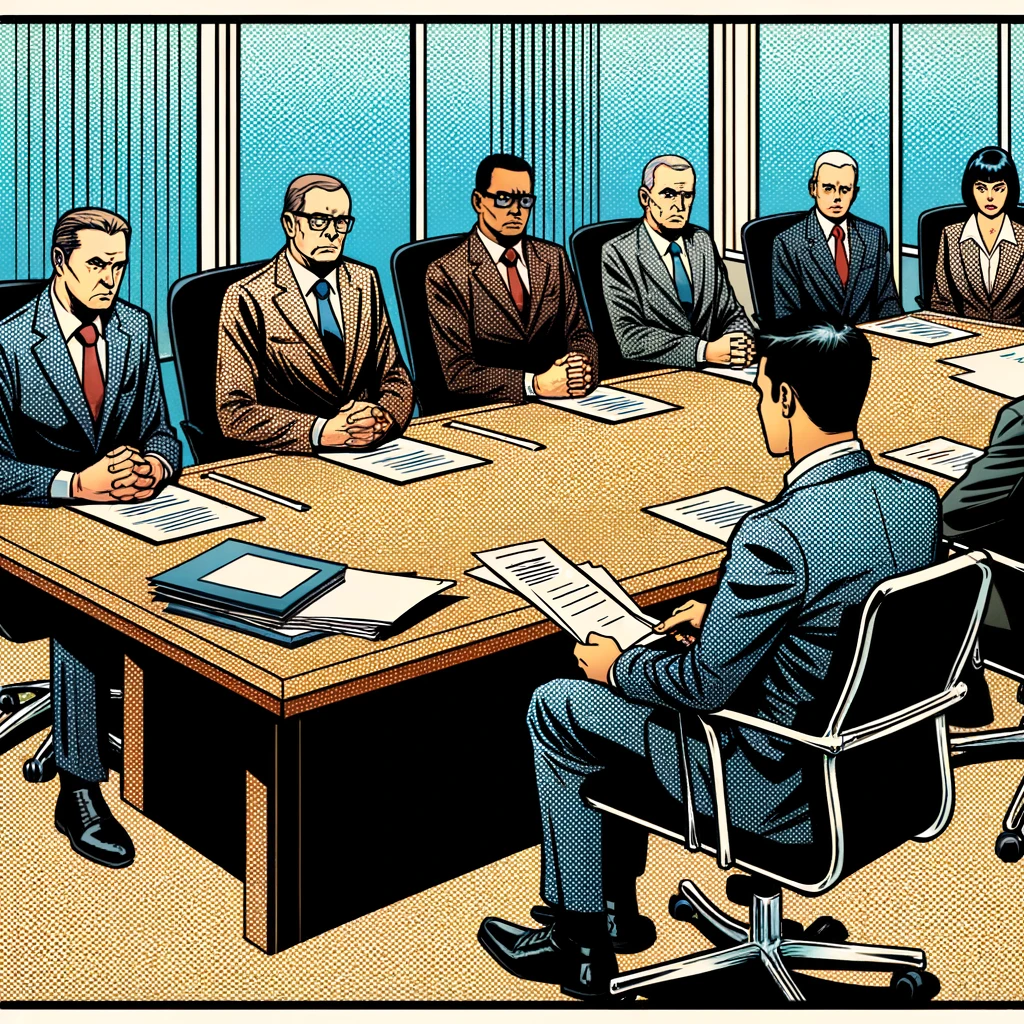Estimated reading time: 5 mins
Disciplinary action in the workplace is a necessary, albeit challenging, aspect of management. It’s a process that, when done correctly, can lead to improved performance, better workplace harmony, and a clear understanding of expectations and consequences. However, if handled poorly, it can result in negative morale, decreased productivity, and even legal complications. In this post, we will explore how to conduct employee disciplinary action effectively and fairly.
Understanding the Need for Disciplinary Action
Before diving into the specifics of disciplinary action, it’s important to understand its purpose. Discipline in the workplace is not about punishment or asserting authority. Instead, it’s about correcting behavior or performance issues and maintaining a productive, positive work environment. It’s an opportunity for learning and growth, both for the employee and the organization.

1. Clear Policies and Expectations
The first step in effective disciplinary action is to have clear, written policies and expectations. These should be outlined in an employee handbook or similar document and provided to employees on their first day. Policies should cover everything from attendance and punctuality to performance standards and workplace behavior. Employees need to know what is expected of them and what the consequences are for not meeting these expectations.
2. Consistency is Key
Consistency in applying disciplinary policies is crucial. All employees should be subject to the same rules and consequences, regardless of their position or tenure with the company. Inconsistent discipline can lead to accusations of favoritism or discrimination, undermining trust in management and the overall integrity of the workplace.
3. Early Intervention with Disciplinary Action
Effective discipline often starts with early intervention. Address issues as soon as they arise, rather than waiting for them to escalate. Early conversations can often resolve problems before formal disciplinary action is needed. These discussions should be framed positively, focusing on the desired outcome rather than the problem itself.
4. Progressive Discipline
Progressive discipline is a system where the severity of the disciplinary action increases with repeated infractions. It typically starts with a verbal warning, then progresses to a written warning, suspension, and finally, if necessary, termination. This process gives employees multiple opportunities to correct their behavior and understand the seriousness of their actions.
5. Fair Investigation
Before taking disciplinary action, conduct a fair and thorough investigation. Gather all relevant information and talk to any witnesses. It’s important to hear the employee’s side of the story too. This not only ensures that you have a complete understanding of the situation but also demonstrates that you’re acting fairly and without bias.
6. The Disciplinary Meeting
When it’s time to hold a disciplinary meeting, plan it carefully. Ensure the meeting is private and that the employee has the opportunity to bring a support person if they wish. Be clear and specific about the issue, the evidence you have gathered, and the expected change in behavior or performance. Allow the employee to explain their side and be prepared to listen actively.


7. Documentation
Document every stage of the disciplinary process. This includes notes from initial conversations, written warnings, details of investigations, and summaries of meetings. Accurate documentation is crucial, both for tracking the employee’s progress and for legal protection should the disciplinary action be challenged.
8. Focus on Improvement
The goal of disciplinary action should always be improvement. Offer support and resources to help the employee improve. This could include additional training, a clearer explanation of job duties, or more frequent feedback. Set clear, achievable goals and a timeline for improvement.
9. Follow-Up the Disciplinary Action
After the disciplinary action, follow up with the employee. Monitor their progress and provide feedback. If they have improved, acknowledge this. If they haven’t, it may be necessary to escalate the disciplinary action. Regular check-ins can reinforce the importance of the issue and your commitment to helping the employee succeed.
10. Legal Compliance and Disciplinary Action
Ensure that your disciplinary actions comply with local labor laws and regulations. This includes respecting the rights of employees, providing due process, and avoiding any form of discrimination. Consult with a human resources specialist or legal counsel if you’re unsure about the legal aspects of your disciplinary process.
11. Training for Managers
Managers should be trained on how to implement disciplinary actions effectively. They need to understand the policies, know how to conduct investigations and meetings, and be aware of the legal implications of their actions. Well-trained managers are crucial in ensuring that the disciplinary process is fair and effective.
12. Promoting a Positive Culture
Finally, while discipline is important, it should be just one part of a broader effort to create a positive, high-performing workplace culture. Encourage open communication, recognize and reward good performance, and invest in employee development. A positive work environment can reduce the need for disciplinary action and help ensure that when it is necessary, it’s more likely to be effective.
Effective employee disciplinary action is about much more than just dealing with problems. It’s an integral part of managing a productive, positive, and fair workplace. By setting clear expectations, acting consistently, focusing on improvement, and respecting both legal requirements and the dignity of your employees, you can turn disciplinary actions into opportunities for growth and development, both for your employees and your organization.


Employee Disciplinary Action Form Template
Employee Information
- Employee Name:
- Job Title:
- Department:
- Employee ID:
Incident Details
- Date of Incident:
- Time of Incident:
- Location of Incident:
Nature of Incident (Describe the nature of the behavior or performance issue in detail.)
Previous Discussions or Warnings (List any previous discussions, warnings, or relevant disciplinary actions related to this issue.)
Action Taken [ ] Verbal Warning [ ] Written Warning [ ] Suspension [ ] Termination [ ] Other (Specify)
Details of Action Taken (Provide details of the disciplinary action, including duration of suspension or specifics of other actions.)
Reason for Disciplinary Action (Explain why this disciplinary action is being taken. Reference specific company policies or performance standards that have been violated.)
Plan for Improvement (Outline the expectations and steps the employee must take to improve behavior or performance. Include specific goals and timelines, if applicable.)
Manager’s Comments (Additional comments or observations from the manager.)
Employee Acknowledgment
- I acknowledge that I have received this disciplinary action and understand the reasons for it. I understand my rights and the expectations for improvement.
- Employee’s Signature:
- Date:
Manager/Supervisor Information
- Name:
- Title:
- Signature:
- Date:
Human Resources Use Only
- HR Representative Name:
- Comments:
- Action Approved: [ ] Yes [ ] No
- Signature:
- Date:
This form should be adapted as needed to fit the specific policies and procedures of your organization. It’s important to ensure that all disciplinary actions are documented accurately and thoroughly, and that they comply with legal and ethical standards.
